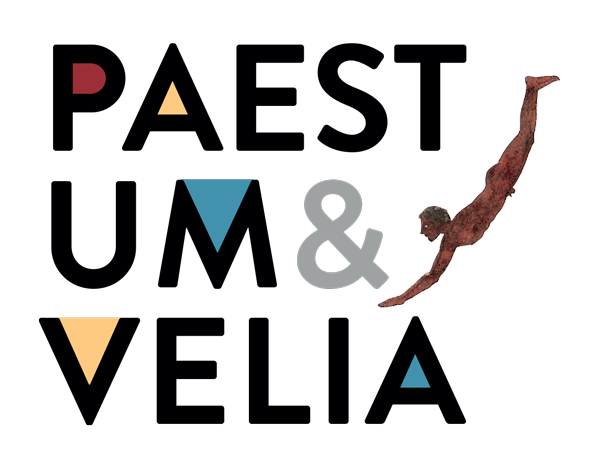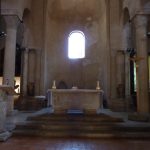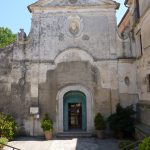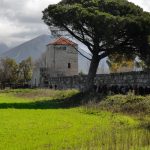- Altare Basilica
- Facciata Basilica Paleocristiana adiacente al Museo
- Navata Basilica
- Torre con visitatori durante la giornata del paesaggio 2018
The 4th century BC marked the decline of the Campanian city: as thorough water engineering was no longer carried out, the river Salso – now Capodifiume – made the whole south-western area marshy, while the Porta Marina and the harbour silted up. However, the Pestani did not capitulate right away: they raised the streets and houses and built ever higher ditches. However, they did not manage to prevent the slow and constant decay of the area. The city became smaller and smaller until it withdrew to the hill of the Temple of Athena.
In the meantime, however, the city had Christianised, so the Temple of Athena was turned into a church, and another church was built nearby (the so-called Early Christian Basilica). In the 6th century the city even became an episcopal see. During that time of religious syncretism, the symbols of the old deities passed on to the new ones: like the pomegranate, the fruit of fertility, which for the whole pagan era had been a feature of the worship of Hera, and which passed on to the Mother of God, worshipped by the Pestani as Madonna del Granato, the Madonna of the Pomegranate.
In late antiquity, the small town eventually disintegrated, although with much likelihood it was never wholly deserted. However, between the 8th and the 9th century, most of the Pestani fled malaria and the Saracen raids and left the plain for the surrounding hills, at the source of the Salso river, in Caputaquis, hence the name of Capaccio, still in use. They brought the worship of the Madonna of the Pomegranate with them.
Finally, in the 11th century, the Normans plundered the temples and stripped the abandoned buildings of their valuable materials, which they reused for the construction of the Cathedral of Salerno. From then on, Paestum would be forgotten for several centuries.

















